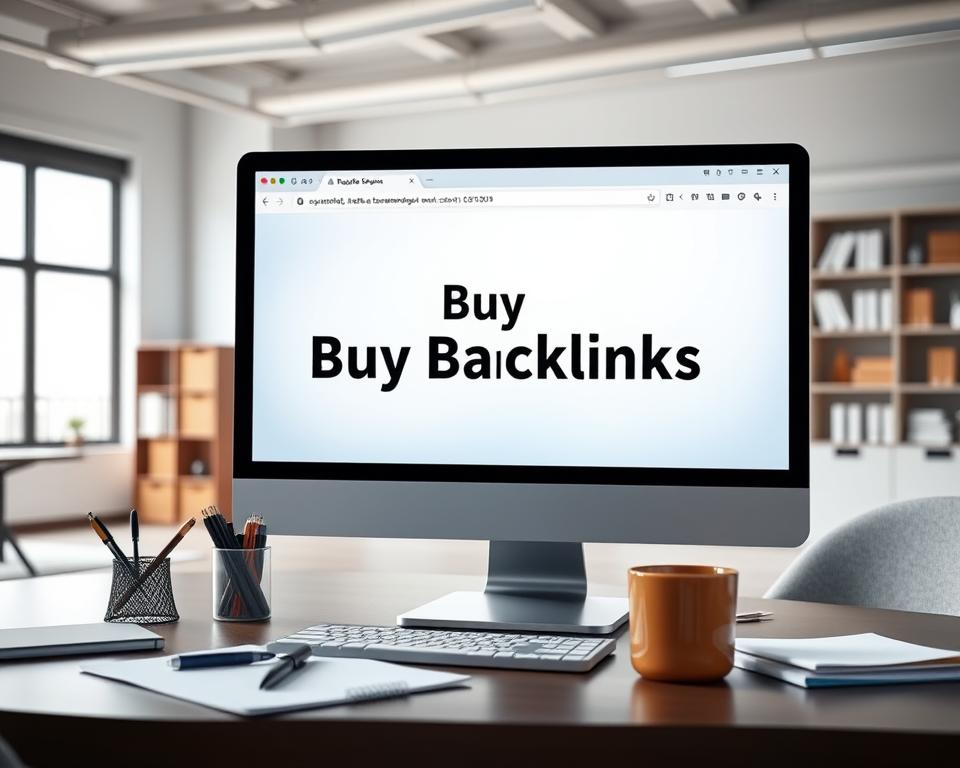Top Search Engine Optimization Agency Close By – Enhance Your Rankings
Fun fact: 53% of website visits come from organic search? Within today’s swift online landscape, having a strong online presence is vital to enterprises to thrive. If you’re looking for a local SEO firm, it’s important to pick a leading provider. Marketing1on1 offers local SEO services that are designed to increase your website’s visibility and attract quality traffic.
Utilizing tailored methods designed for the Huntsville region, you can improve your positions. It provides you with a competitive edge in the SEO Huntsville arena. Visibility alone is not enough; targeting the appropriate audience at optimal moments is key.
Choosing a nearby search optimization firm is crucial for companies aiming for success in their arena. These firms have specialized skills to target location-based keywords. This ensures they are visible in essential localities, such as AC repair Houston. Their expertise assists companies in engaging with regional consumers who are actively seeking their services.
A local firm, for example, Marketing1on1, stands out in handling local listings. They optimize sites such as Google Business Profile as well as Yelp, boosting local visibility. By emphasizing phrases that reflect buyer readiness, their goal is to create premium prospects. They result in heightened traffic and revenue.
Managing reputation is another significant benefit offered by local SEO companies. They employ affirmative internet feedback, which are essential for businesses, especially in the home services industry. Principled methods lie at the heart of a respected local search agency. They steer clear of unethical techniques and employ ethical methods to ensure lasting outcomes.
Clear pricing and contract terms remains a critical attribute of the best SEO agency nearby. Customers receive detailed information regarding the offered services and projected results. Given that over 5 million local searches occur every month in Houston, the significance of robust local SEO cannot be overstated.
Local search optimization firms continuously monitor updates in algorithms and evolving trends. Thus, they preserve advantageous positions. Their comprehensive grasp of local trends permits content refinement using optimal geo-targeted keywords. This improves rankings further. Leveraging local ties, they obtain superior backlinks that augment credibility.
Ongoing surveillance of local standings allows prompt corrections by regional SEO agencies. Better communication and cooperative efforts result in immediate feedback and occasional on-site gatherings. Their active community involvement positively impacts reputation management and facilitates community engagement.
Enhancing Your Digital Presence Through Local SEO
Localized search optimization services are crucial for enhancing digital exposure. Considering that 46% of Google queries are locally driven, focusing on nearby audiences is imperative. A professional SEO agency can expand local search visibility by implementing targeted keywords and on-page improvements.
Targeted content and local keyword research help companies meet their audience’s specific needs. This method facilitates customers in discovering related information, resulting in increased engagement. To cite an example, 78% of local mobile searches culminate in in-store buys within 24 hours, emphasizing the promptness of such interactions.
Optimization offerings including Google My Business oversight and citation development boost online presence. Research indicates notable surges in click-throughs, visibility, and conversion rates with effective local SEO. By focusing on local searchers’ unique needs, companies can gain a competitive edge and improve their online presence.
Why Choosing an SEO Agency Nearby is Crucial
Geographic relevance is indisputable when selecting a search optimization firm. A nearby SEO firm comprehends local buyer behavior thoroughly. This expertise facilitates crafting tactics that effectively engage the community. This approach is not only efficient but also extremely applicable to your target group.
Buyer behavior has experienced a notable transformation. The incidence of ‘near me’ searches on mobile devices has escalated by over 500% since 2015. This pattern emphasizes the necessity for companies to strengthen their regional digital footprint. Focused methods such as optimizing Google My Business listings are indispensable. They assist in establishing businesses as dependable and esteemed within the community.
An analysis of a skincare boutique reveals the effects of localized SEO. It saw a 4000% increase in impressions after implementing a local SEO strategy. This demonstrates the significant growth a well-optimized online presence can bring. Utilizing a tool for citation management to maintain consistent business details is equally important. Consistent NAP (Name, Address, Phone) information is critical in this area.
Tracking keyword performance at different geographic levels is key. Monitoring reviews and feedback is equally important. This aids in grasping regional tastes and enhancing service standards. Evaluating these aspects is essential when selecting a search optimization agency. It ensures businesses effectively reach and engage with their audience, boosting both foot traffic and online inquiries.

Defining the Best Local SEO Firms
An elite local SEO firm distinguishes itself through verified success, tailored methods, and thorough regional insights. They center their efforts on client sectors, substantiated by real-world examples and reviews that affirm their local expertise.
Providing an extensive suite of expert search optimization solutions is crucial for companies looking to enhance digital visibility. It covers tactics like geo-targeted keyword enhancement, establishing Google My Business listings, citation creation, and brand reputation management. Such services provide a complete solution to SEO needs, aiming for better website visibility and increased traffic.
Clear communication is a hallmark of leading search optimization firms. They ensure ongoing dialogue regarding their tactics and advancements. Routine reporting provides clarity on progress and any strategic shifts. Agencies also invest in continuous education and training to keep up with SEO trends and algorithm updates.
Proficiency in regional dynamics empowers agencies to formulate tactics tailored to precise corporate aims and local environments. Regional SEO specialists perform detailed market studies and evaluations. It guarantees an in-depth grasp of customer demographics and the competitive milieu. Ongoing review and modification allow these firms to adapt their plans in line with shifting SEO patterns.
| Perks of Partnering with a Premier SEO Agency | Description |
|---|---|
| Higher Search Engine Rankings | Better SERP standings boost online presence and audience reach |
| Improved Website Interaction | Focus on providing users with a seamless experience boosts engagement |
| Increased Conversion Rates | Optimized methods yield increased sales and enhanced conversion performance |
| Rivalry Evaluation | Insight into competition enables more effective strategic adjustments |
| Advanced Analytics | Employment of specialized tools such as RevenueCloudFX guarantees refined metric monitoring |
In today’s digital world, businesses can choose from various SEO services to boost their online presence. Offerings such as localized search optimization, page-level enhancements, external linking tactics, technical improvements, and content strategy are available. Each offering is tailored to meet distinct objectives, fitting diverse organizational necessities.
Geo-targeted SEO seeks to boost standings in defined regions, essential for companies with brick-and-mortar sites. It engages community members. Page-level enhancements address aspects such as keywords, meta descriptions, and content standards, critical for improved rankings. External tactics build credibility via link acquisition and social endorsements. Technical enhancements focus on making websites efficient for search engines, thus bettering performance and usability.
Content marketing is key, using various formats like articles, videos, and images to engage audiences. Recognizing the different SEO services helps businesses choose the right solutions for their goals. They can seek advice from an affordable SEO company to find strategies that fit their budget and objectives.
The Impact of Veteran SEO Advisors
Experienced SEO consultants are vital for crafting and executing effective SEO strategies that meet specific business objectives. Their robust grasp of market dynamics and competitor evaluations facilitates the formation of precise tactics. Such strategies target increased exposure and higher visitor flow. A reputable agency, like Marketing1on1, employs seasoned SEO experts with over a decade of experience. Thus, enterprises receive well-rounded, effective solutions.
Working alongside seasoned experts may result in remarkable improvements. An example includes a reported +664% surge in natural traffic coupled with a +360% boost in digital leads. Implemented methods cover on-site, technical, and geo-targeted search optimization techniques. This covers all facets of digital marketing. Mastering keyword analysis and regional search refinement enables companies to connect with a wider market. As 70% of search engine users prefer organic results, this is a significant advantage.
Client success stories highlight the effectiveness of these strategies. Clients have experienced a +155% improvement in premier keyword positions. Frequent updates and clear reporting maintain client awareness regarding SEO performance. Continuous refinements help preserve these improvements.
Testimonials frequently highlight the impact of tailored services across various sectors, including small businesses, law firms, ecommerce, and healthcare. An agreement-free policy allows for adaptable cooperation with seasoned search optimization experts. It enables effortless adaptation of tactics in light of evolving market conditions. The typical SEO process shows initial results within 90 to 150 days. This is critical for long-term growth and visibility in competitive markets like San Diego.
Key Features of Professional SEO Services
Expert search optimization solutions provide a range of essential elements designed to enhance digital visibility and ranking positions. A comprehensive SEO firm stands out by conducting thorough keyword analysis. Such research is indispensable for uncovering language that engages your audience. It underpins the creation of plans aligned with your specific objectives.
In-depth site evaluations represent another crucial aspect. These audits assess functionality, architecture, and content components. These audits pinpoint areas for enhancement, leading to technical SEO improvements. Key aspects involve page loading times and mobile compatibility. On-page optimization, like meta tags and content quality, greatly affects user experience.
Tactical link acquisition, including outreach and content collaborations, is essential for strengthening domain credibility. Regional SEO enhancements are fundamental for engaging local consumers. Adhering to ethical optimization methods secures enduring development and customer confidence.
Frequent performance updates coupled with SEO metrics offer critical insights. Assigned account representatives ensure transparent dialogue, timely feedback, and collaborative efforts. A proficient optimization firm demonstrates a proven track record, substantiated by customer reviews.
Anticipating Results from a Budget-Friendly SEO Firm
Selecting a budget-friendly search optimization firm is a prudent decision for companies seeking enhanced digital visibility without excessive costs. Companies like On The Map Marketing show that cost-effective SEO solutions can be customized for small businesses. They provide offerings from $100 per hour, coupled with a free audit to highlight potential upgrades.
Affordable search optimization solutions depend on long-term techniques. They combine on-page, off-page, and technical SEO to gradually improve rankings. Cost structures generally vary between $100-$150 per hour or $1,000-$2,000 per month. Such pricing offers an optimal mix of cost-effectiveness and service excellence for companies exploring SEO options.
Alternatives such as Ignite Visibility provide refund assurances along with competitive rates from $500 per month. Additionally, SEO Reseller supplies white-label options beginning at $100 hourly, designed for modest-sized companies.
Opting for economical SEO strategies secures sustained support. Services include content creation, technical optimization, and backlink building. By concentrating on measurable metrics, businesses ensure that each expenditure leads to genuine improvements in rankings and organic visitor numbers.
The bustling world of SEO presents a variety of alternatives for enterprises seeking to elevate their online profile. Many nearby agencies stand out due to their innovative solutions and effective campaigns. Marketing1on1, in particular, shines by focusing on local businesses and delivering proven SEO results.
Below is a side-by-side comparison of several prominent firms:<
| Firm Name | Starting Price | Key Features |
|---|---|---|
| Rank by Monday | $250/month | All-in-one local SEO, keyword research, competitor analysis, on-page optimization, dedicated project manager |
| SEO Discovery | $250/month | Coverage of 20 keywords, operations in two areas, review management, social media strategy |
| WebFX | $425/month | Artificial intelligence powered tactics, comprehensive citation oversight, reputation monitoring, MarketingCloudFX solutions |
| Straight North | Tailored Pricing | Personalized backlink development, customized local optimization plans |
| BrightLocal | $29/month | DIY SEO dashboard, analytical tracking, citation services |
| Fiverr | $5 monthly | Project-based services, freelancer connections for citation building and keyword research |
Each firm adds to the dynamic local SEO scene, providing customized strategies that meet specific business needs. Side-by-side analysis shows that recognizing each agency’s individual advantages is essential for selecting the ideal partner. Opting for a regional SEO firm bolsters community economic growth and furnishes companies with strategic local advantages. As you explore the competitive SEO landscape, consider these options for finding the perfect SEO partner for your business.
Case Studies: Success Stories from Local Businesses
Case studies offer deep insights into the triumphs of local businesses that leveraged SEO services. Marketing1on1 presents numerous examples. These highlight how strategic approaches can spur growth across various sectors.
The Law Office of Thomas O. Mason climbed to the top two spots on Google Maps, leading to a surge in client interest. Meanwhile, Oliver Family Dental reported a 150% surge in organic visits and a 50% uptick in lead generation. These results highlight the practical gains yielded by effective SEO tactics.
A senior living community, Waterford on the Bay, recorded an impressive 195% increase in earnings over half a year. This example illustrates the power of effective local SEO in driving substantial profit increases. Another legal practice, collaborating with Bliss Drive, noted a 150% improvement in organic traffic. This emphasizes the value of seasoned expertise in achieving SEO triumphs.
A healthcare facility working with Marketing1on1 experienced a 200% surge in appointment reservations. It reveals the transformative impact of targeted local search optimization on patient engagement and service standards. An eatery, utilizing Thrive Agency’s proficiency, enjoyed a 300% boost in digital booking numbers. It reinforces the necessity of refining digital profiles to drive local growth.
| Business Type | SEO Agency | Results |
|---|---|---|
| Attorney Firm | — | Securing the top two positions on Google Maps with boosted customer interest |
| Oral Health Center | — | 150% increase in organic traffic, 50% increase in leads |
| Assisted Living Facility | N/A | 195% revenue increase in 6 months |
| Medical Clinic | Marketing1on1 | A 200% jump in patient bookings |
| Eatery | Thrive Agency | Tripled online table bookings with a 300% rise |
An enterprise in the home services sector with Digital Shift observed a 125% boost in organic visits. A vehicle repair center partnering with WebFX registered a 150% enhancement in site traffic. An e-commerce store, in collaboration with SEO Inc., saw a 175% boost in local search traffic. They highlight the substantial effect that well-executed SEO methods can have on enterprise success.
Navigating the Path to the Optimal Nearby SEO Firm
Selecting the appropriate search optimization partner is fundamental for digital achievement. The journey to the ideal partner necessitates specific benchmarks to inform your selection. Start with collecting key details such as financial plans, cost structures, and targeted objectives. Moreover, evaluate the agency’s locale and its focus within your market sector.
Subsequently, research search optimization firms via recommendations, digital directories, and direct outreach. Verifying success stories and client feedback is crucial for establishing trustworthiness. Applications such as Screaming Frog aid in validating client legitimacy. Look closely at past results and client references to gauge the agency’s expertise.
Ensure the agency’s deliverables meet your specific needs. Be wary of unrealistic promises or generic solutions. Inquire about project timelines, anticipated outcomes, and sector-specific expertise.
Typical errors comprise opting for minimal cost providers or exclusively nearby agencies. Also, avoid those using black-hat SEO practices. Focus on the agency’s standing, cost-effectiveness, and client care. Note that 61% of businesses hire SEO agencies for their expertise, with 46% recommending them based on satisfaction.
Target agencies that exhibit a history of achievements through documented case studies. Customized SEO strategies tailored to each client’s needs are essential. Transparent communication, including regular updates, builds trust.
A comprehensive digital marketing provider delivers a holistic strategy. Relying on analytics facilitates effective performance tracking and tactical refinement. This approach paves the way for persistent advancement and successful results.
To Conclude
Committing to regional search optimization is crucial for companies seeking enhanced digital visibility. Local SEO is critical for reaching local markets and boosting visibility in search results. It remains a fundamental element in any robust marketing approach. Companies like Levy Online have seen a significant rise in customer engagement and organic traffic, highlighting the benefits of expert local SEO services.
Future SEO success is predicated on accurate, adaptive strategies for local consumers. Firms such as Foremost Media lead the charge by enabling companies to attain specific outcomes and remain pertinent amid changing trends. They conduct local SEO audits, perform detailed keyword research, and optimize platforms like Google Business Profiles. Such measures guarantee that companies resonate with their target market.
The importance of regional search optimization is immense. Aligning with a dependable SEO partner can substantially improve prominence, generate sales, and stimulate growth. As businesses navigate the digital landscape’s complexities, prioritizing local SEO is key to success in the dynamic market.
Common Inquiries
How would you define local SEO and its significance for my company?
Regional search optimization focuses on enhancing digital visibility within specific areas. This is essential for companies targeting defined regions. Enhancing your ranking elevates your visibility among local clientele.
How does a premier SEO company close by boost my online presence?
An elite local SEO company, for example Marketing1on1, understands regional dynamics thoroughly. They use strategies like keyword optimization and Google My Business profile optimization. This enhances your visibility in local search results.
Which services are commonly provided by search optimization firms?
SEO agencies deliver a spectrum of offerings. These include local SEO, on-page optimization, and content marketing. Solutions are adapted to meet the distinct demands of your business.
How do I know if an SEO company is affordable and effective?
When searching for an affordable SEO company, check their case studies and customer feedback. Marketing1on1 delivers value-driven SEO strategies that do not compromise on quality. They ensure measurable results that align with your budget.
What factors should I consider when picking a nearby SEO company?
Focus on the agency’s local insight and verifiable achievements. Assess their solutions, testimonials, and interaction quality. This ensures you select the most suitable firm.
What role do seasoned SEO experts play in enhancing my enterprise?
Skilled SEO professionals study industry patterns and assess competitor strategies. They also conduct advanced keyword research. This expertise results in tailored optimization strategies vital for expansion.
What features should I expect from professional SEO services?
Advanced SEO solutions feature elements such as targeted keyword analysis, comprehensive audits, and competitive assessments. Additionally, they provide backlink development and routine analytics updates. They are designed to support continuous monitoring and improvement of your SEO efforts.
Can you provide examples of successful local business campaigns?
Yes, Marketing1on1 has many success stories. They illustrate how neighborhood companies have boosted their search positions and site visits. These examples prove the real-world advantages of targeted search optimization.
Why is the geographical proximity of an SEO company important?
Being nearby is an essential factor. Regional SEO companies possess intimate knowledge of local consumer dynamics. This insight leads to more effective marketing tactics for local customers.
How regularly should I assess my SEO approach?
Consistent review of your search optimization plan is essential. Reputable agencies such as Marketing1on1 emphasize clear communication and ongoing refinement. Such evaluations support progress tracking and prompt modifications to maintain momentum.









